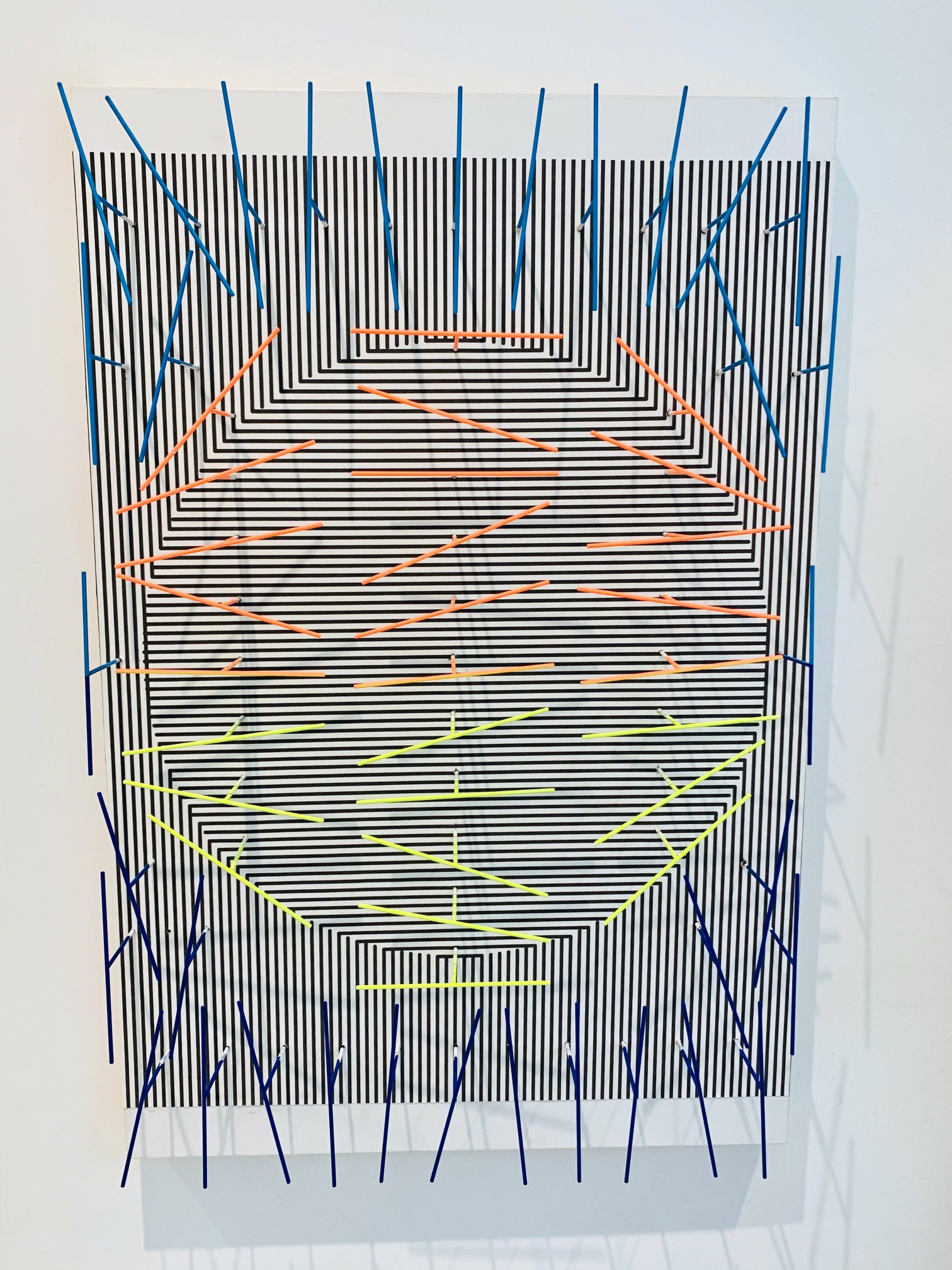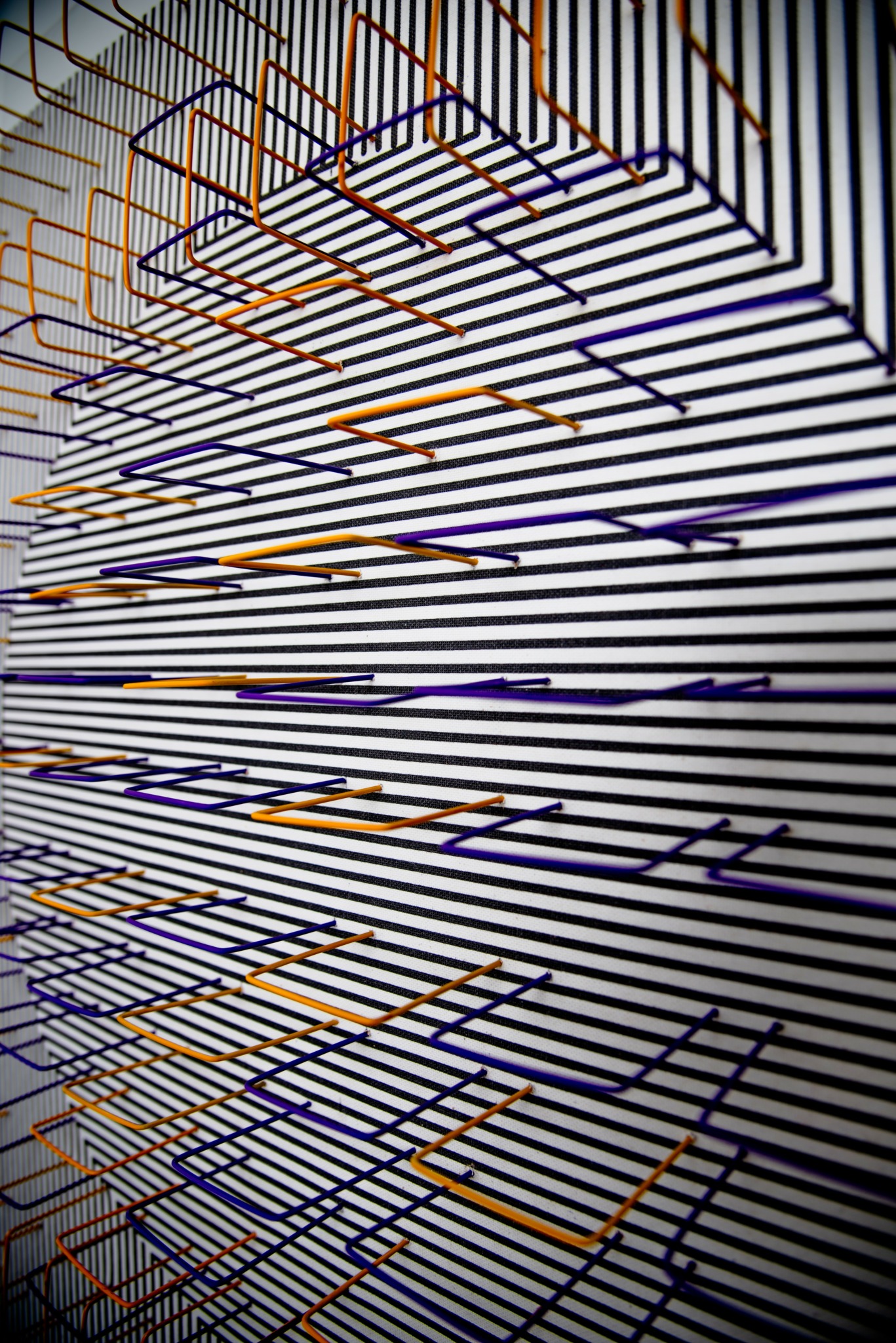We recently connected with J Carvallo and have shared our conversation below.
J, looking forward to hearing all of your stories today. Can you talk to us about how you learned to do what you do?
My journey as an artist began at a very young age, thanks to my grandmother, a talented figurative painter who introduced me to the world of art. She was the one who put me in front of an easel for the first time and gifted me my first set of real oil paints, sparking a lifelong passion for creating. From the beginning, painting felt like a natural extension of my emotions and thoughts. At first, my style was completely expressionist—unbound, instinctive, and driven by raw energy. I worked without rules, embracing chaos as a defining feature of my art. This period was one of pure experimentation, where I let color and form guide me without any preconceived notions.
As I grew and pursued my studies in architecture, my approach began to evolve. Architecture introduced me to the principles of geometry, structure, and spatial relationships, which started to influence my art. What was once purely chaotic began to take on elements of order and balance. I found myself drawn to the search for equilibrium, translating architectural concepts into visual compositions. This shift marked the beginning of a more deliberate exploration of how form, color, and light could interact to create a sense of movement and depth.
Through the years, I combined this structural foundation with a fascination for kinetic art and optical illusions. Experimenting with materials like high-reflection canvases and steel rods allowed me to push my work into a three-dimensional realm, where the viewer’s movement becomes integral to the experience. My pieces now incorporate overlapping patterns and moiré effects, creating dynamic visual phenomena that change depending on the viewer’s perspective.
Looking back, I see my evolution as a constant dialogue between the freedom of expressionism and the precision of architecture. The early years of unrestrained experimentation taught me to trust my instincts and embrace failure as part of the learning process. Meanwhile, my architectural training provided the tools and discipline to refine my vision and achieve the harmonious balance that defines my work today. It’s this interplay between chaos and control, intuition and analysis, that drives me to create immersive, ever-changing experiences for my audience.


J, love having you share your insights with us. Before we ask you more questions, maybe you can take a moment to introduce yourself to our readers who might have missed our earlier conversations?
I’m an artist and architect born in Miami, FL, and raised in Caracas, Venezuela, where I was first inspired by the rich artistic heritage of my home country. From a young age, I was introduced to the world of art by my grandmother, a gifted figurative painter who put me in front of an easel and gave me my first set of oil paints. This early exposure ignited a lifelong passion for creativity, which evolved over time into a dynamic and multidisciplinary practice that bridges art and architecture.
My entry into the art world was shaped by a desire to explore perception, movement, and spatial relationships. Initially, my painting style was highly expressionist and chaotic, but as I studied architecture in Venezuela and later earned my master’s degree from the University of Miami, my work began to shift toward a more structured and analytical approach. Architecture taught me to see the world through the lens of geometry and equilibrium, concepts that now heavily influence my art.
Today, my creative works are grounded in the principles of optical and kinetic art, blending geometric analysis with the study of color and light. I create three-dimensional pieces that use high-reflection sublimated canvases and painted steel rods to produce optical illusions and dynamic visual experiences. My work incorporates overlapping patterns, moiré effects, and vibrant color interactions, inviting viewers to physically move around each piece to fully appreciate its shifting and multidimensional nature.
What sets my work apart is the experiential quality it offers. I strive to create moments where viewers pause, observe, and engage with the art, discovering that no two encounters with a piece are ever the same. This sense of movement, combined with the intentional use of color, evokes a unique emotional response and challenges the viewer’s perception of static objects.
I’m most proud of the way my work resonates with people and sparks curiosity and reflection. It’s incredibly rewarding to see how audiences interact with my pieces, moving around them and experiencing art in a way that feels personal and dynamic. My goal is to create immersive environments that leave a lasting impression, fostering a connection between the viewer and the artwork.
For potential clients, followers, or fans, I want them to know that my work is a fusion of technical precision and emotional expression, driven by a deep love for both art and architecture. It’s not just about creating visually striking pieces but also about crafting experiences that inspire thought, curiosity, and a sense of wonder. Whether displayed in galleries, private collections, or public spaces, my art is designed to engage and transform the way people perceive the world around them.


What do you find most rewarding about being a creative?
For me, the most rewarding aspect of being an artist is the ability to create immersive experiences that evoke a sense of wonder and connection. Art allows me to express my deepest thoughts and emotions in ways words cannot capture, offering viewers an opportunity to pause, reflect, and engage with something beyond the ordinary. When someone stops to interact with my work, experiencing its dynamic shifts and optical illusions, it reaffirms why I create… to spark curiosity and bring moments of stillness and discovery into people’s lives.
Another deeply fulfilling aspect is the journey of constant learning and experimentation. From my early chaotic expressionist style to the more structured approach influenced by my architectural background, each step has been a process of growth. I find immense joy in the technical and creative challenges of my craft, whether it’s studying how the human eye perceives patterns or testing new materials and techniques to push the boundaries of kinetic art.
Ultimately, the greatest reward is knowing that my art resonates with people, inspiring them to see and experience the world in a new way. It’s not just about the final piece but the connection it fosters and the conversations it starts. That ability to create meaning and leave a lasting impression is what drives me forward every day.


How did you build your audience on social media?
The truth is, I have my wife to thank for the growth of my social media presence. When I first started, I only had a basic Instagram account where I occasionally posted a few works. Over time, I began adding stories to show more about my creative process, the materials I use, and how my pieces come to life. Then, during COVID, my wife encouraged me to take it more seriously. She suggested I dedicate time to developing my page and put real effort into creating engaging content.
I started sharing more regularly, organizing my posts to make them look cohesive and professional. I focused on showing not just the final product but the journey behind each piece—something that really resonated with people. While I don’t have a massive following, I’m incredibly proud of the nearly 6,000 followers I’ve built. They continuously remind me that what I do matters and that my work is appreciated.
For anyone starting to build their social media presence, my advice is to be consistent, share your story, and show your process. Don’t worry about the numbers; focus on building a genuine connection with your audience. Even a small, engaged community can be incredibly rewarding. And if you have someone like my wife in your corner, listen to their advice—it can make all the difference.
Contact Info:
- Website: Under construction
- Instagram: https://www.instagram.com/jcarvallo.art/
- Youtube: https://youtu.be/_gMVfiZ9zVM?si=aA5bhWc7FMVbUtNz


Image Credits
Oscar Huespe, Antonio Paris


